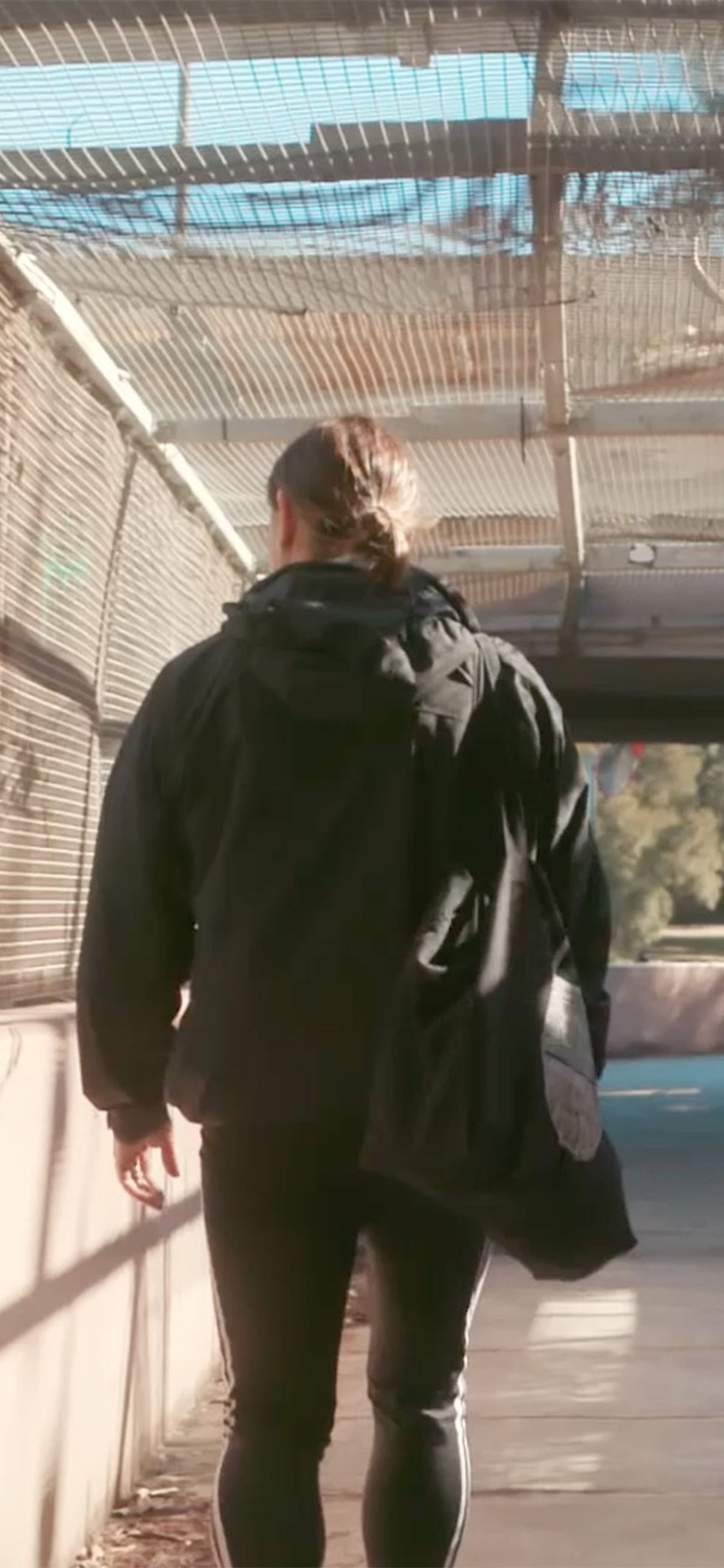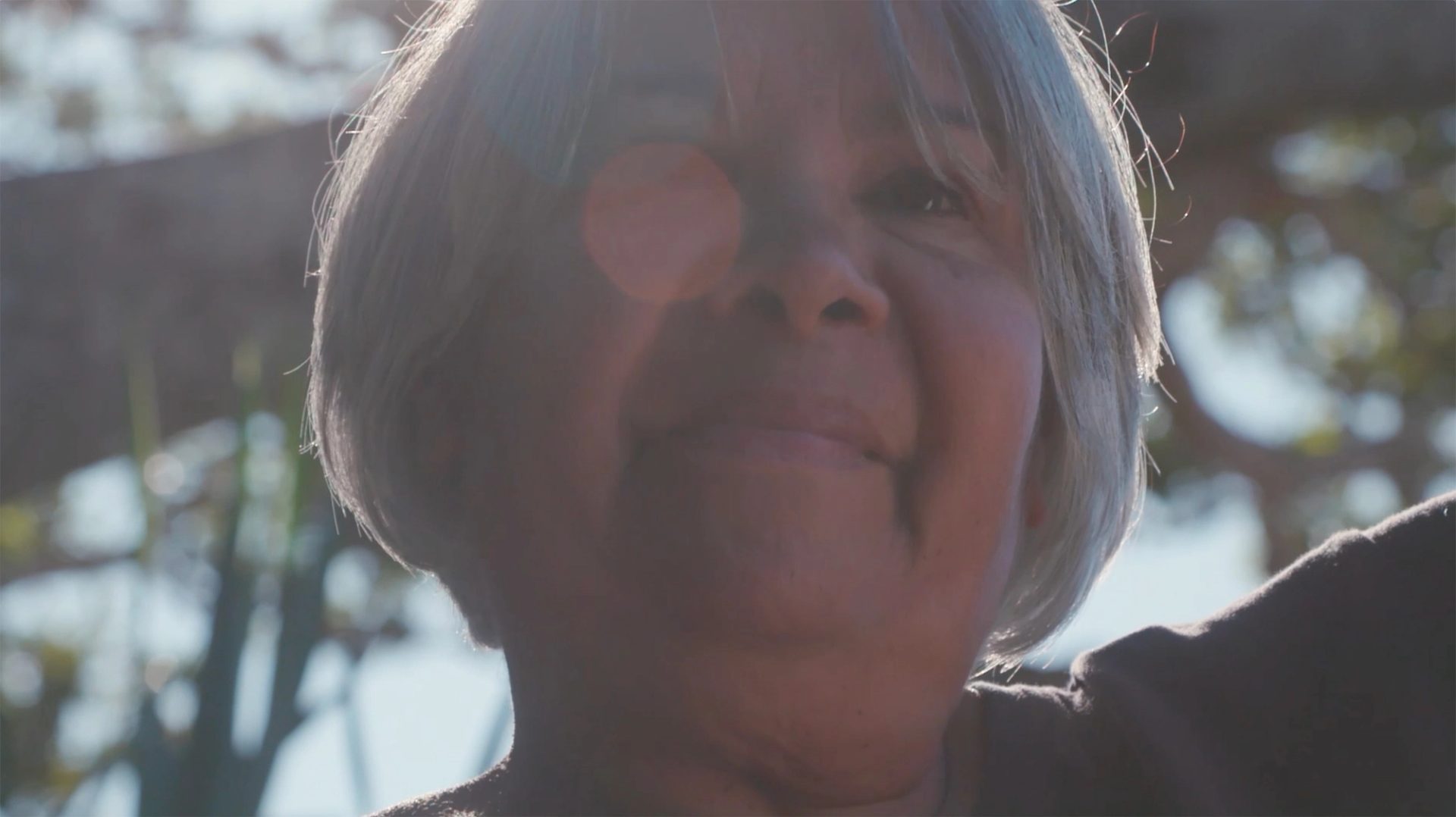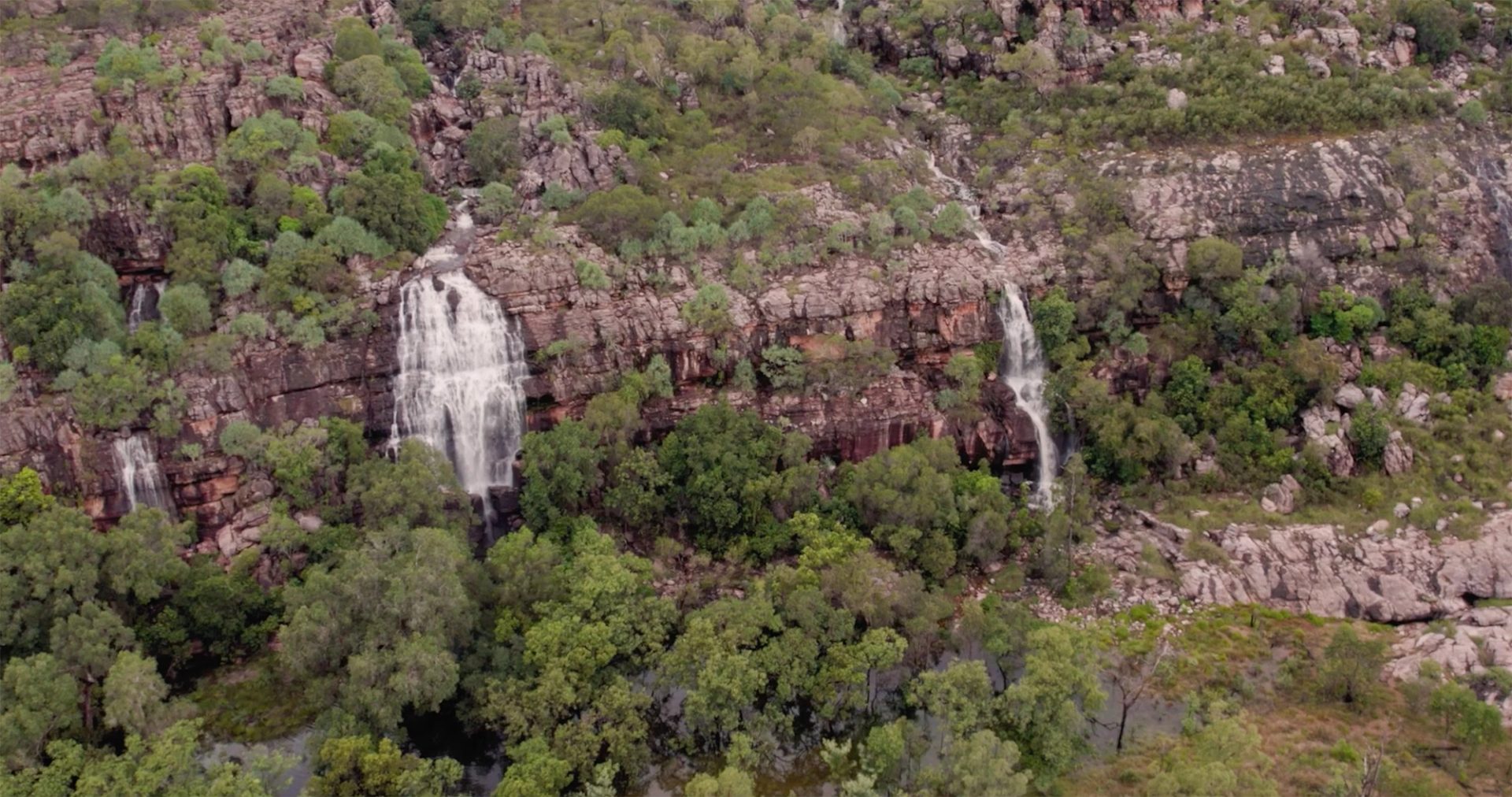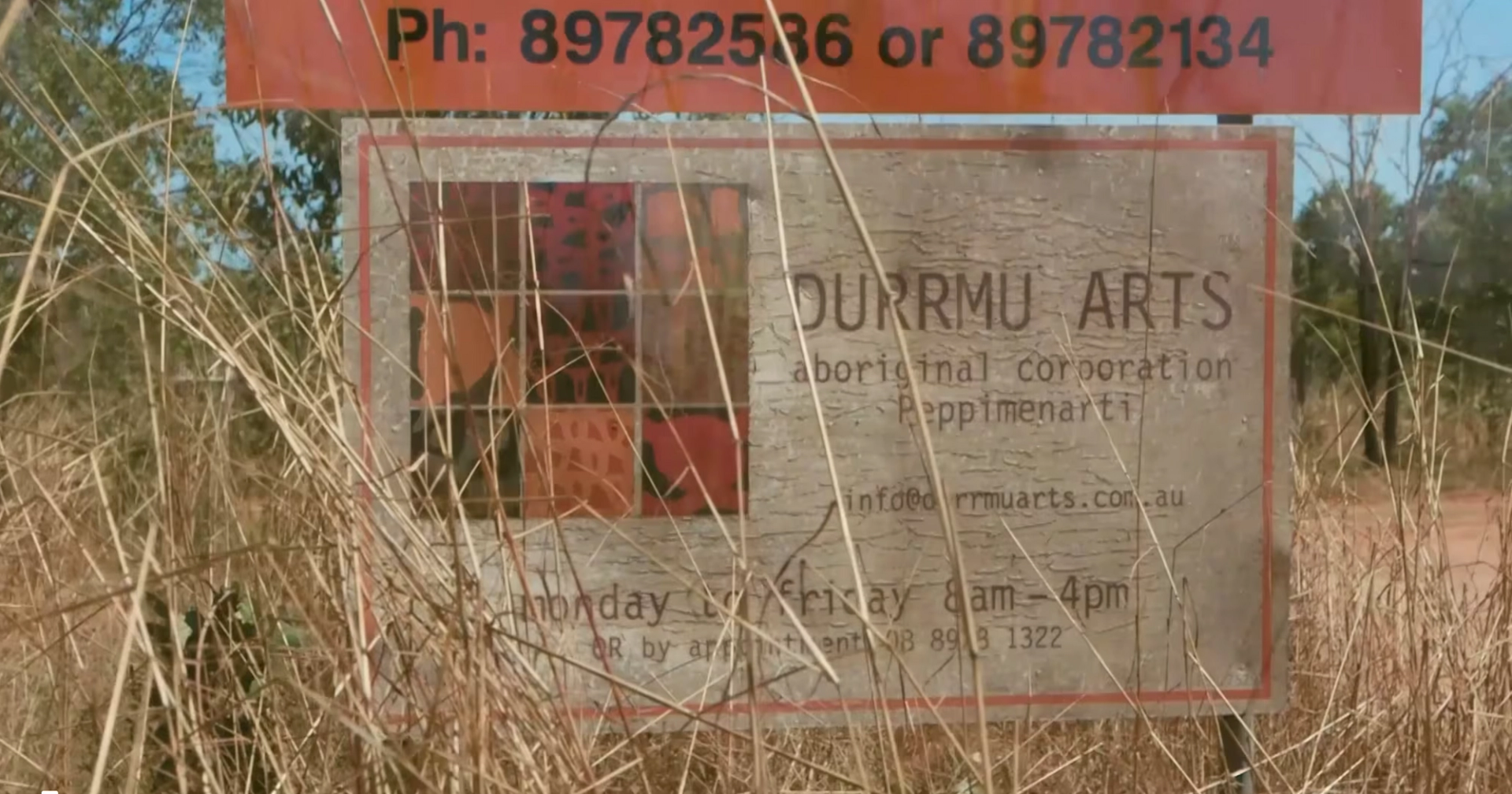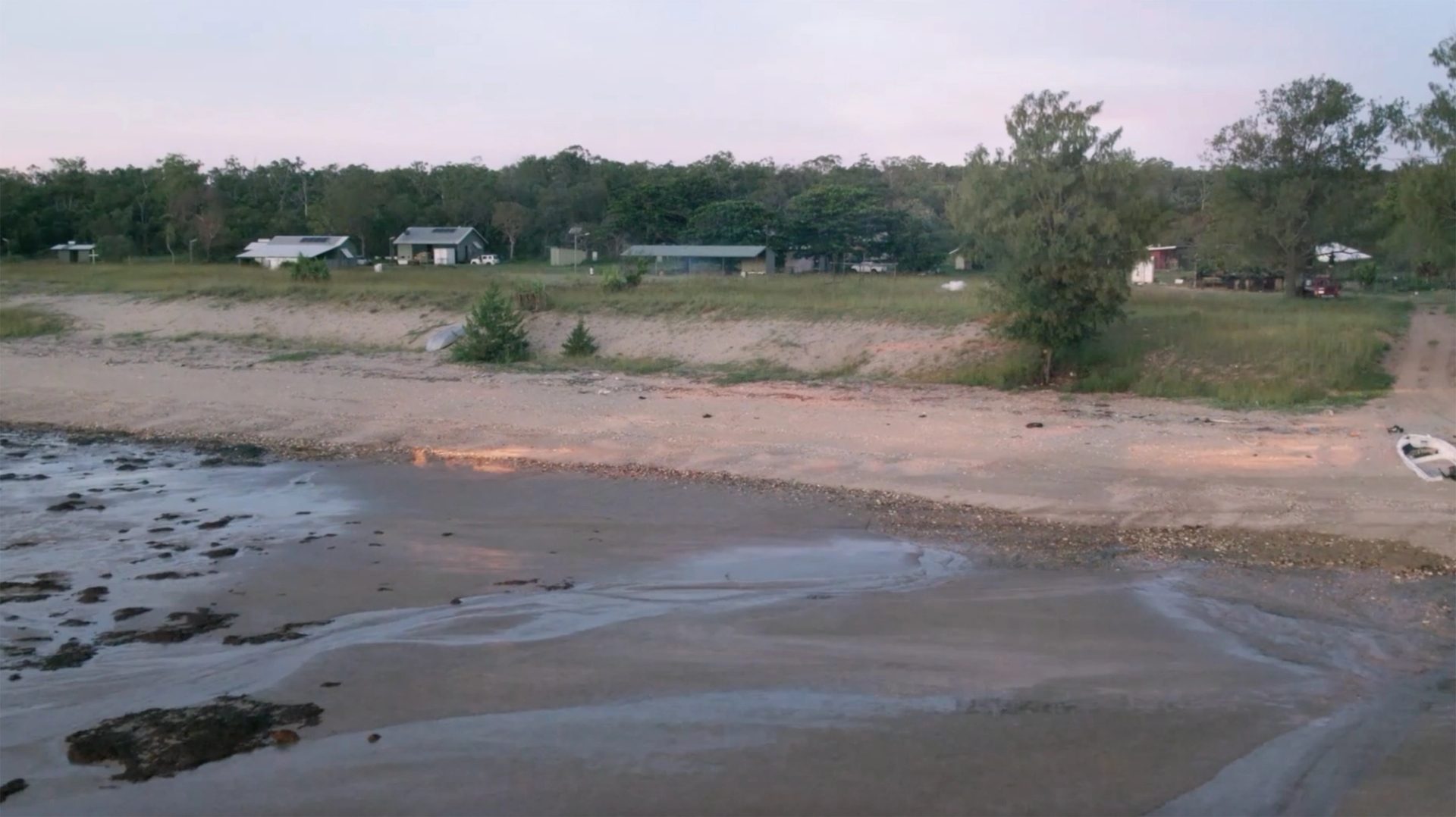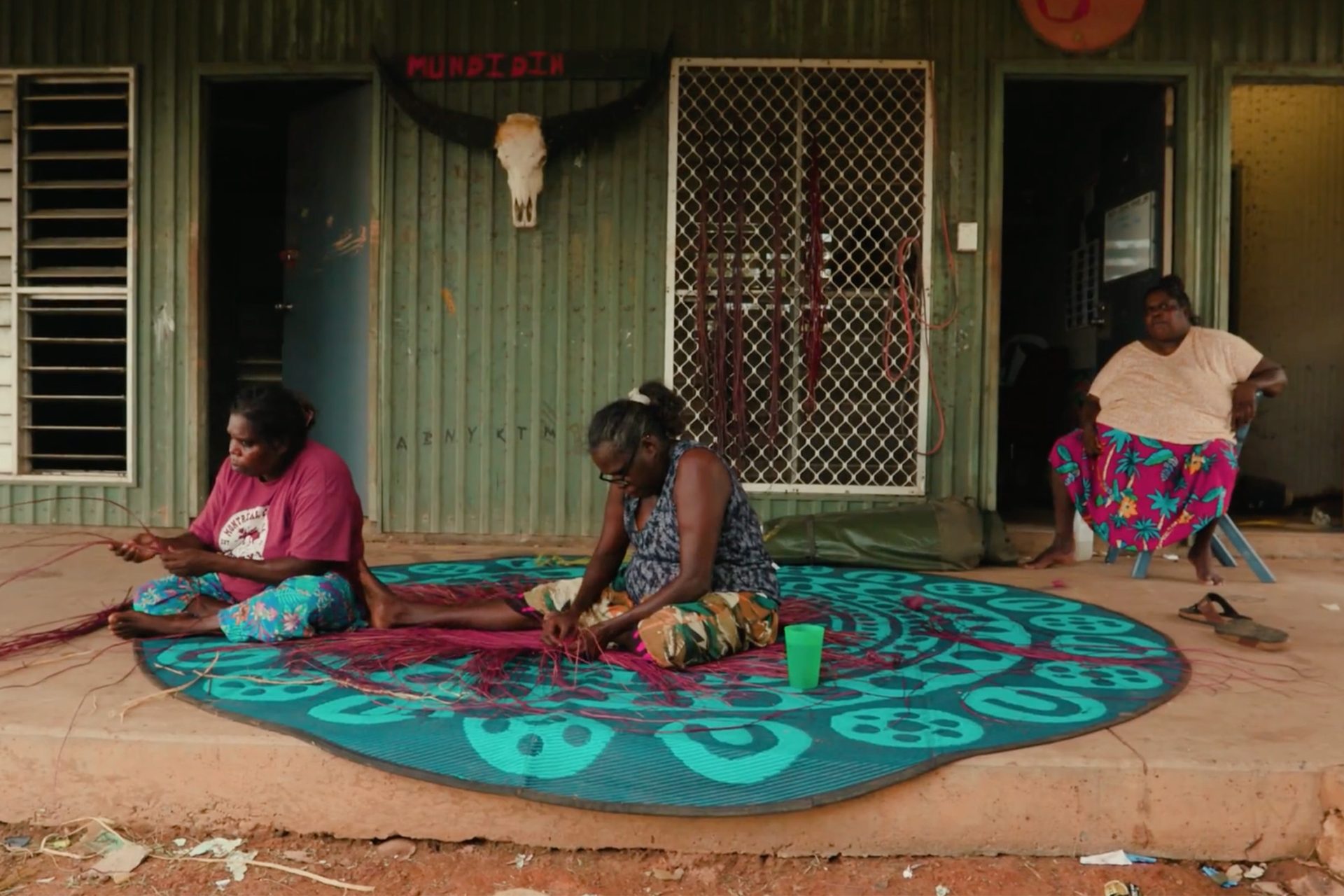Lucy Simpson

Yuwaalaraay woman and artist Lucy Simpson shares her process and creative inspiration in making Gaay-bidi (big story) for the Powerhouse exhibition, Alchemy.
‘Gaay-bidi/big story began with a feeling of loss and grief and mourning and sadness over the yarn about the bogong moth.’
Lucy Simpson The importance of remaining connected and the role that you play in ensuring things stay connected. You can call this conceptual stuff, you can say it's art, whatever you want to call it. If your hands are busy and you're thinking on those stories and you're able to pass that on in a way, then you play a role in that. But if you don't, what? It's like a weight.
I'm Lucy Simpson. I'm a Yuwaalaraay woman and I live in Sydney and our mob's from north-western New South Wales and just over the Queensland border. We're freshwater women.
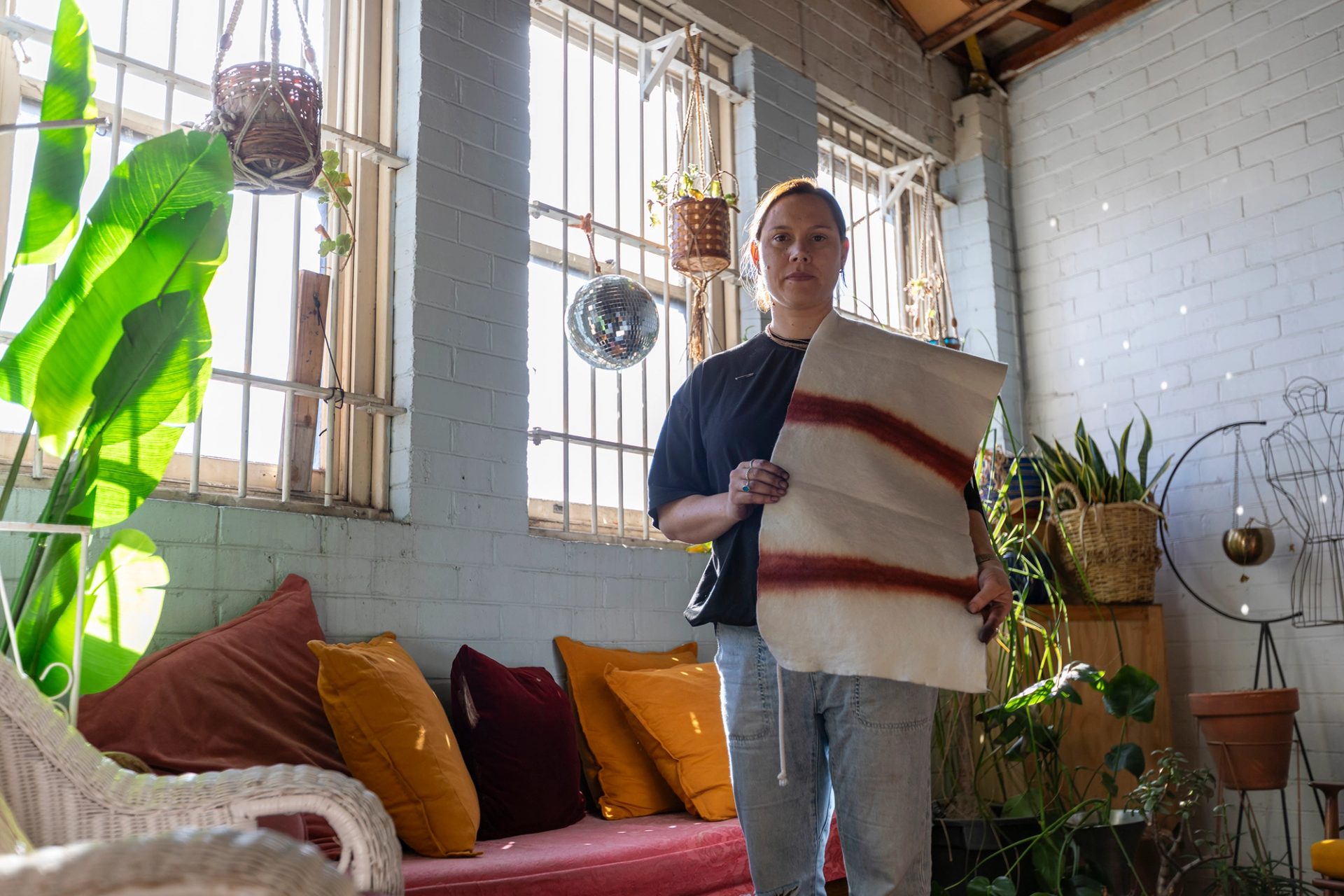
I'm a designer and maker, I would say. It's easy for other people to understand you as an artist but I don't really identify in that way. I make, and I find different ways to connect with and share story. So, that can take lots of different forms and materials and processes. I think the thing I love about what I do is that it’s process led or process driven. While there's a lot of planning that goes into the work, I'll never really know what it's going to look like until it's done. And you know when you see, you know.
This Gaay-bidi (big story) began with a feeling of loss and grief and mourning and sadness over the yarn about the bogong moth. Oh, silly thing makes me want to cry to think about it. Numbers so vast you couldn't count them. They were counted per square foot. But because there was such an abundance, there was no real data or evidence of how many there were at that time of abundance, but you don't notice them until they're gone. This work for me is about remembering everything that's part of that big story and knowing and understanding my place within it as a Yuwaalaraay woman, freshwater woman.
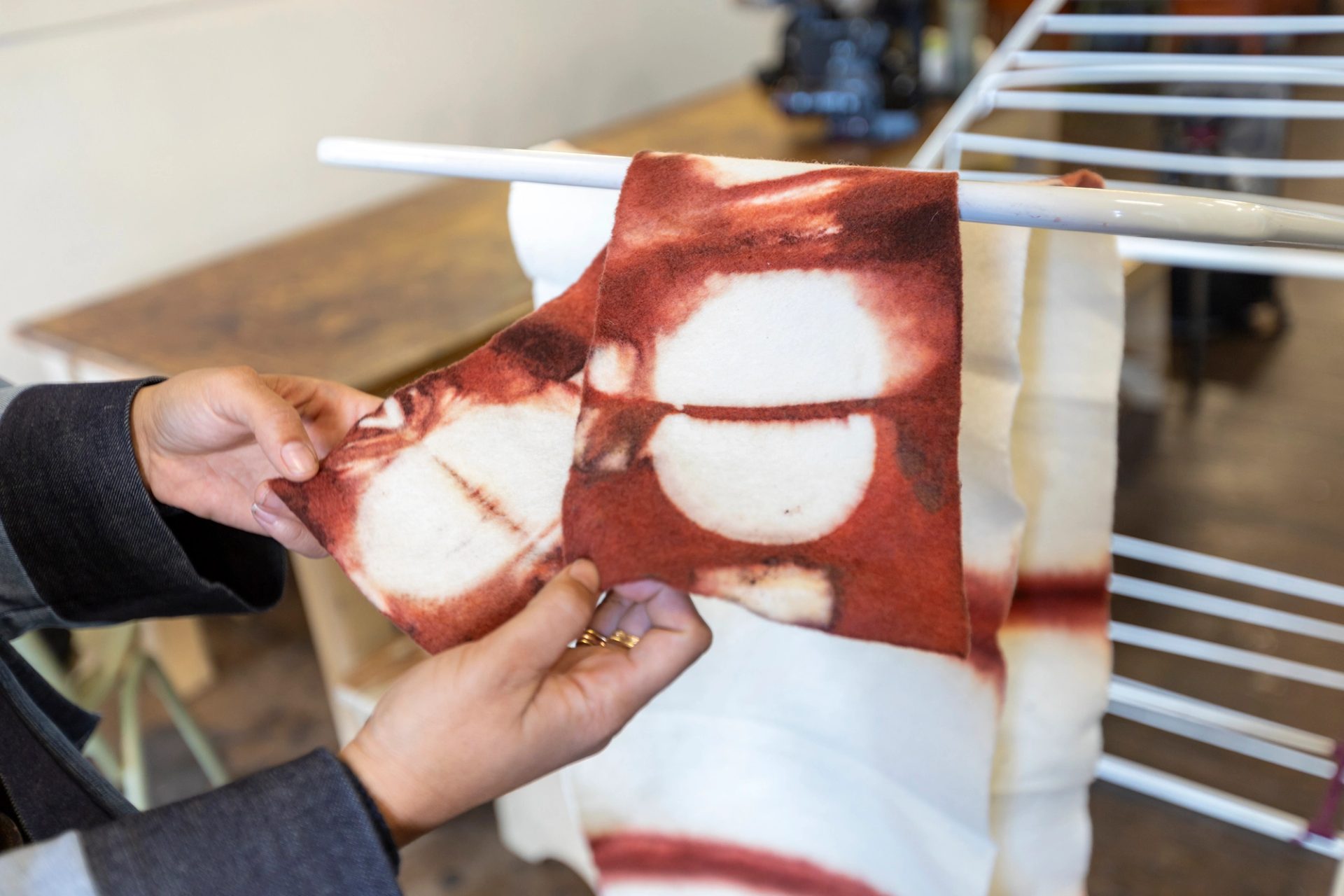
These pieces for me talk about those kin-centric relationships or how we are one and the same or we're related. We're connected, interconnected. We rely upon each other. We give life to each other.
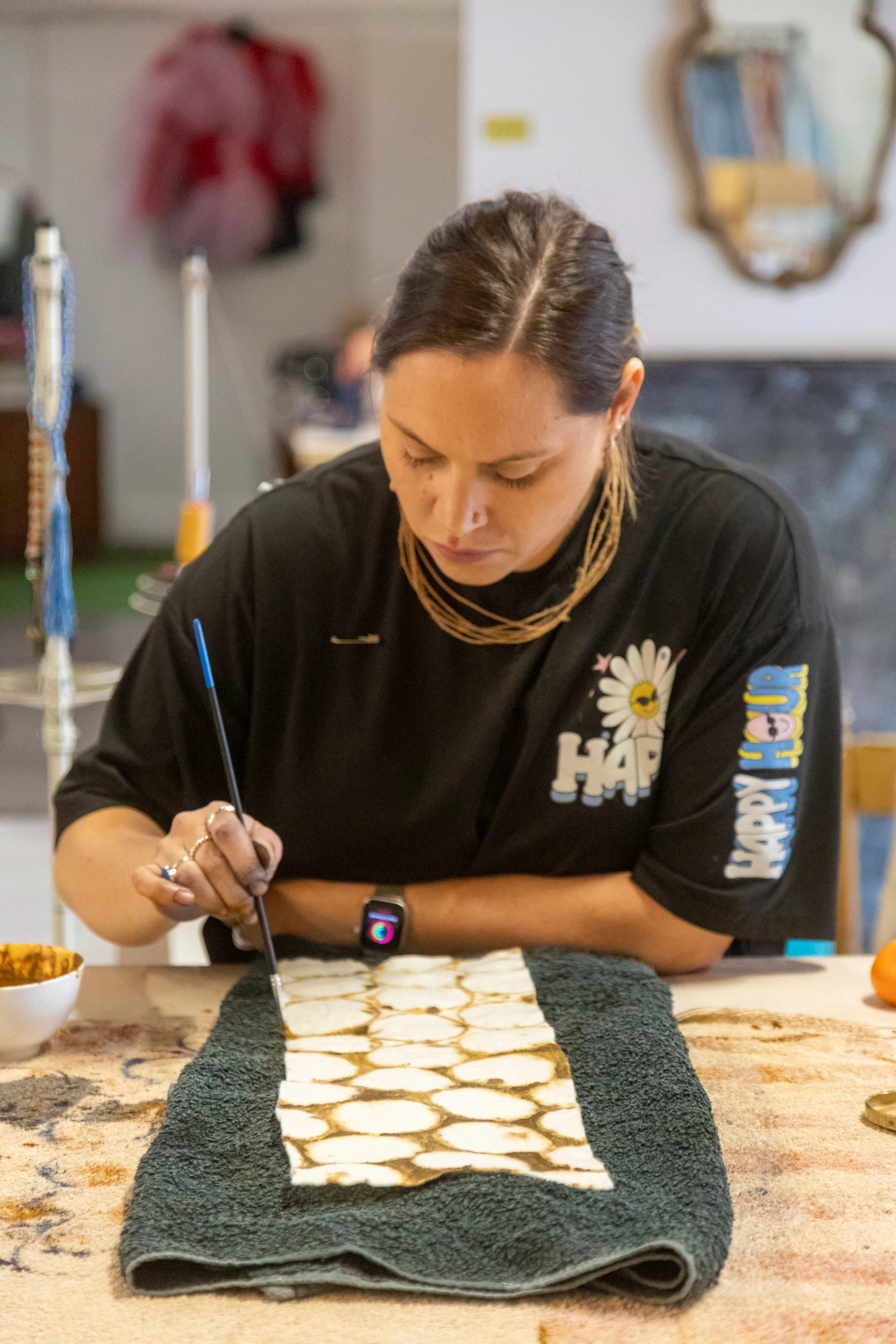
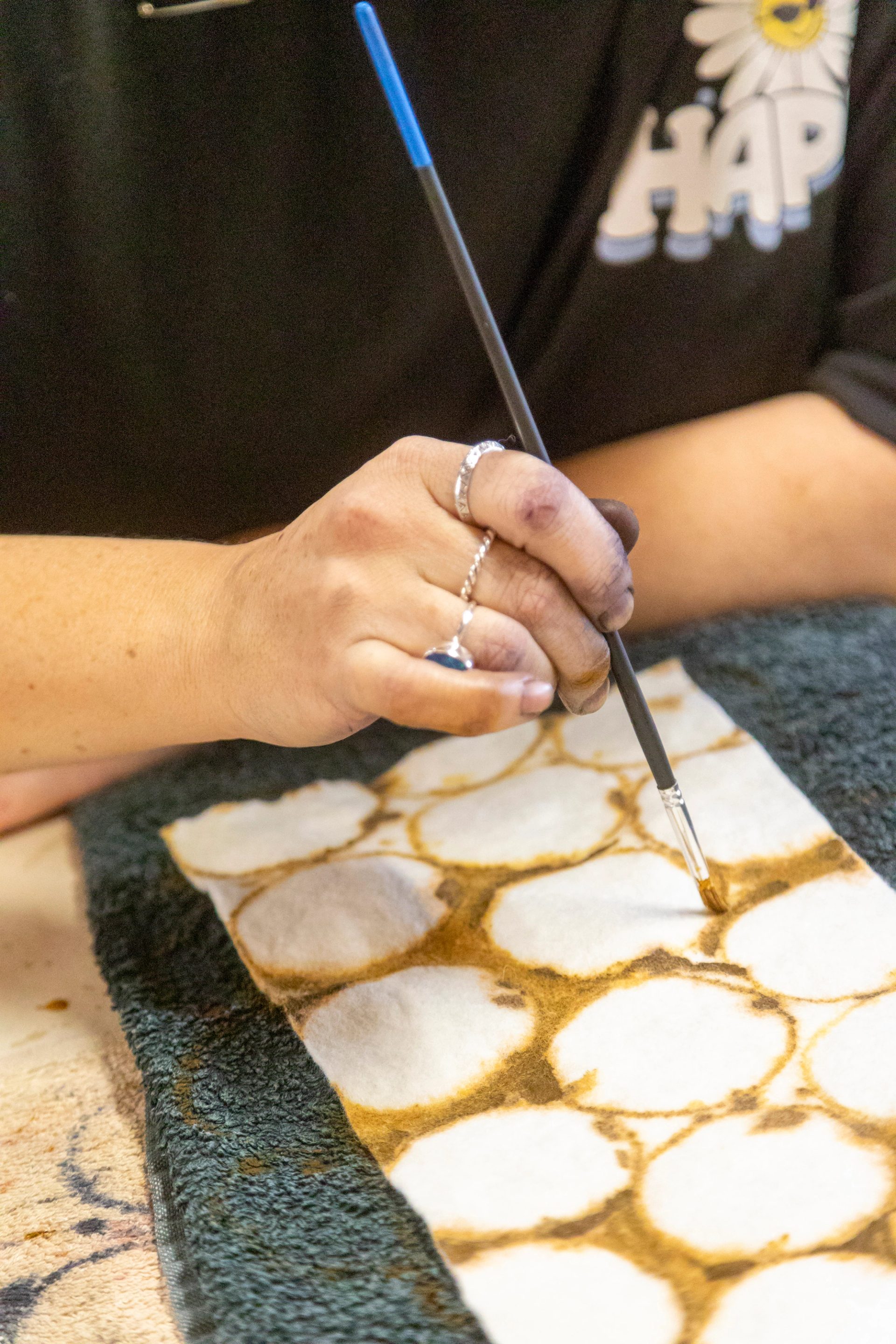
That loss inspired the making of this work because I find I can work through those heavy feelings and grief by keeping my hands busy and by creating something that provides a window for other people to look in and understand and know better and see themselves within it.
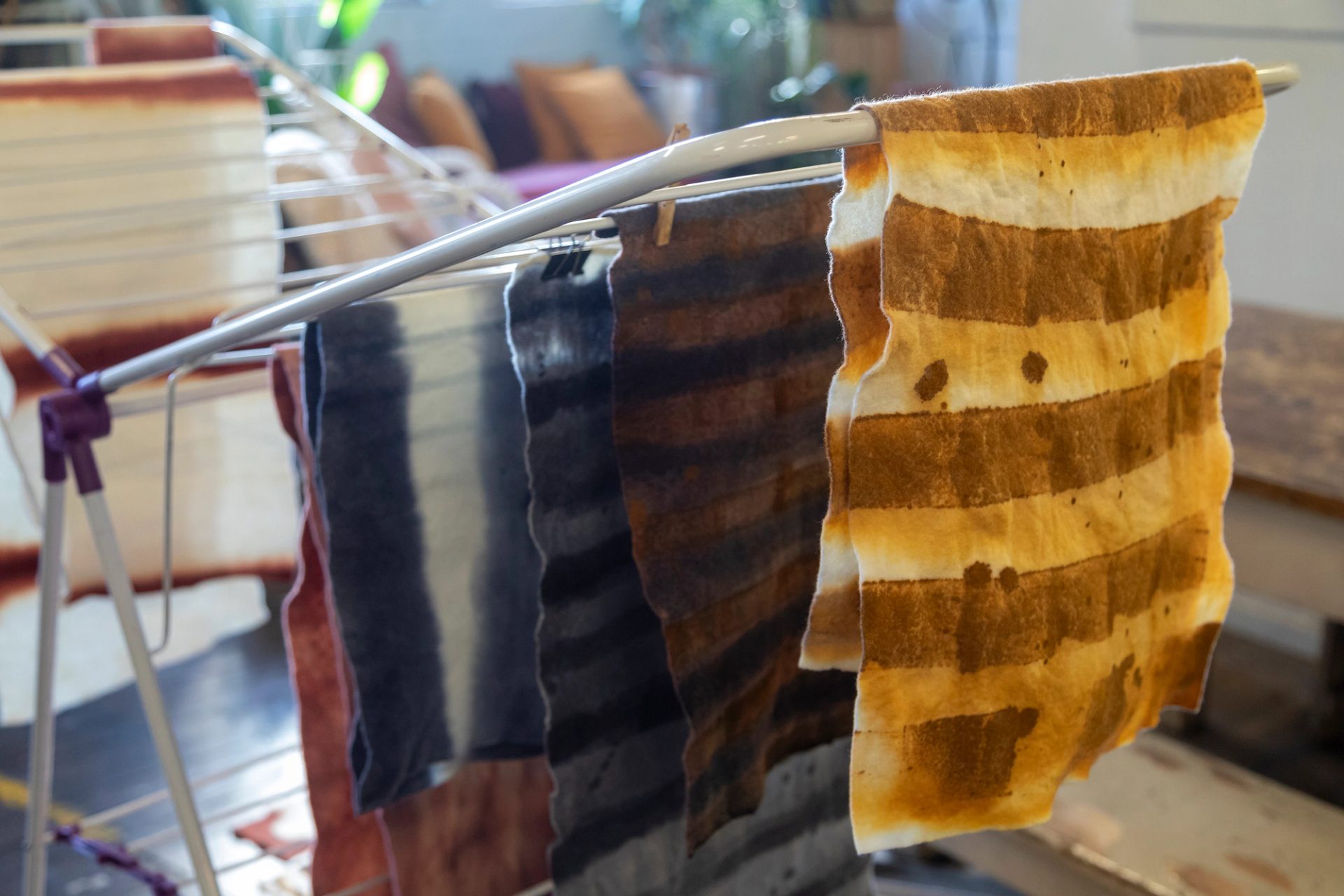
The first piece we're working on today, guwaymbarra is the red blood, is the red one. So, these forms map Country and mob and story along that big thousand-or-so-kilometre migration of the moth – from where the grub burrows and returns, to up in my ngurrambaa around Walgett and beyond. So, the red for me is our red Country where the red sand meets a black soil and it's plain country. We’re looking at red stripes for this one, looking at nhungga Country where the kurrajong grows in that red sand and putting that plant into these pieces so we can remember and celebrate Country and story and our old fullas.
These for us are the cloaks or the capes, our maran. They're our old fullas as well as these little fullas. So, finding the symbols and the connections in everything, but not really having to articulate it until you got a yarn about it, embodying all those things. And then people coming and seeing those things and bringing their relationships and understandings and experiences. Becoming part of that story and then taking it on with them. Who I am and how this work is also connected to that yarn and how those different stories manifest beautifully through textiles and that tactile relationship and making, and the heat and the colour, and all those things that make us respond and remember.
The idea or the thought or the kind of feeling is that nothing can exist in isolation. Everybody's got a role to play.
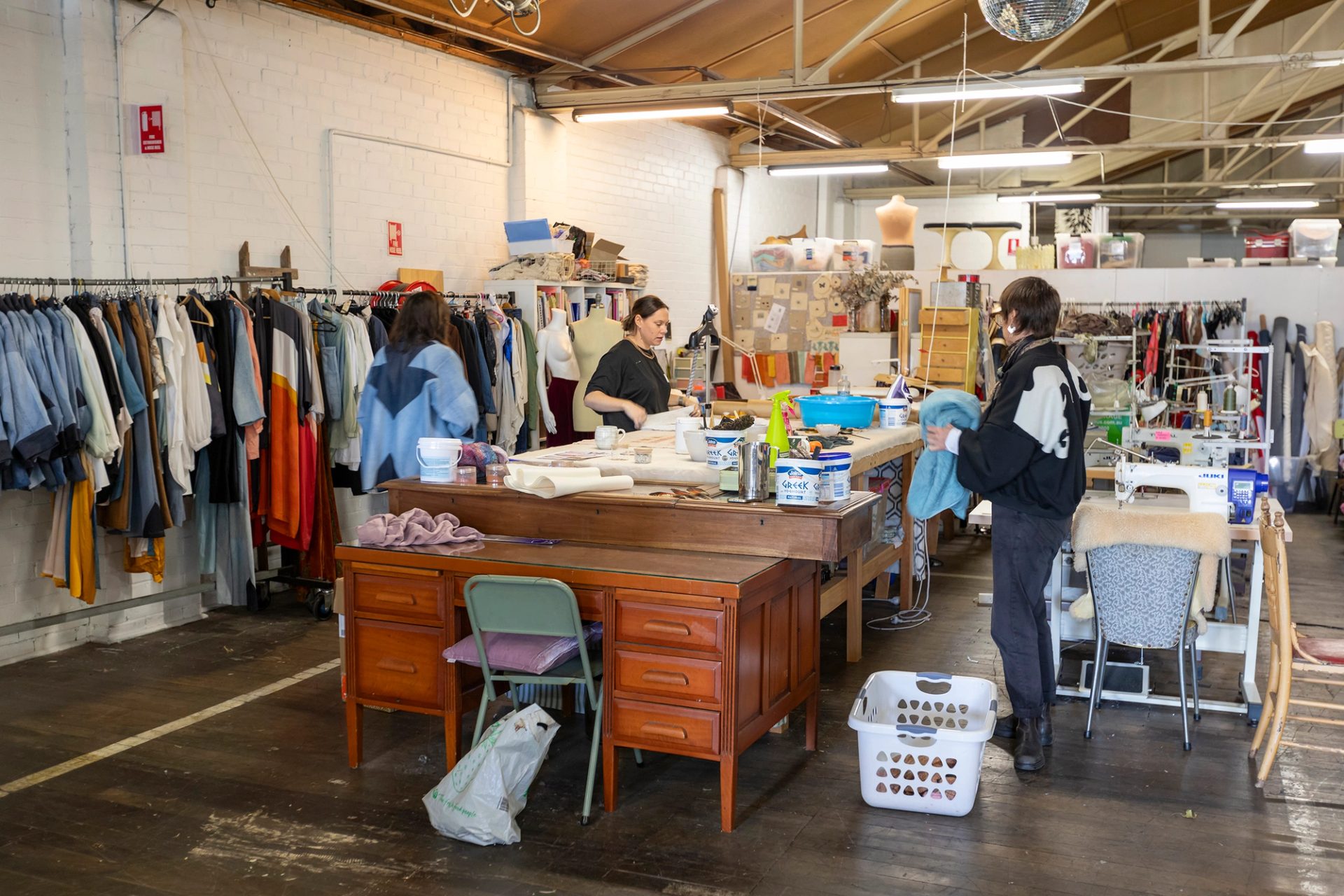
The idea or the thought or the kind of feeling is that nothing can exist in isolation. Everybody's got a role to play and respecting those relationships is really important, whether it's relationships to place or to family or to story or to people that you know, and that you work with, because you can never know everything. You can never do everything wonderfully, perfectly, beautifully. Carrying those special relationships means that you can honour and do the best by that story and represent it the best way you know how.
I think relationships are at the centre of everything. So, feeding those things and helping them to grow and finding new relationships. It's a beautiful thing – through making – to share different parts of the journey with other people.
I’m starting with red, because I don't see myself as any kind of master when it comes to natural dye or the knowledge systems that are connected and interconnected with that knowledge. But I can understand the connections to colour. And with my kind of limited knowledge, I have some understanding of some of the plants that can provide those colours and hold those symbols.
We’ve used some cinerea (which is a eucalypt they put in the florist bunch with a bunch of flowers, really easy to get and grows down south), but incorporating colours of Country that map that journey. My initial thought was to use plants that are endemic to those waterways, that map that journey. But it's like the separation between the person and the animal. Why do we have to do that? Because we don't see these things as being different. So, we've infused in this red dye bath, for example, the cinerea, which I would associate with the end of the journey, whichever way you want to look at it, and the kurrajong or the nhungga, which is the start of the journey. So, we're actually making these objects to sing that story as one song rather than verses of. As we work through the red we create these prints and translate Country, and for other forms we'll mimic patterns on the wing of the moth, maybe explore the grub itself.
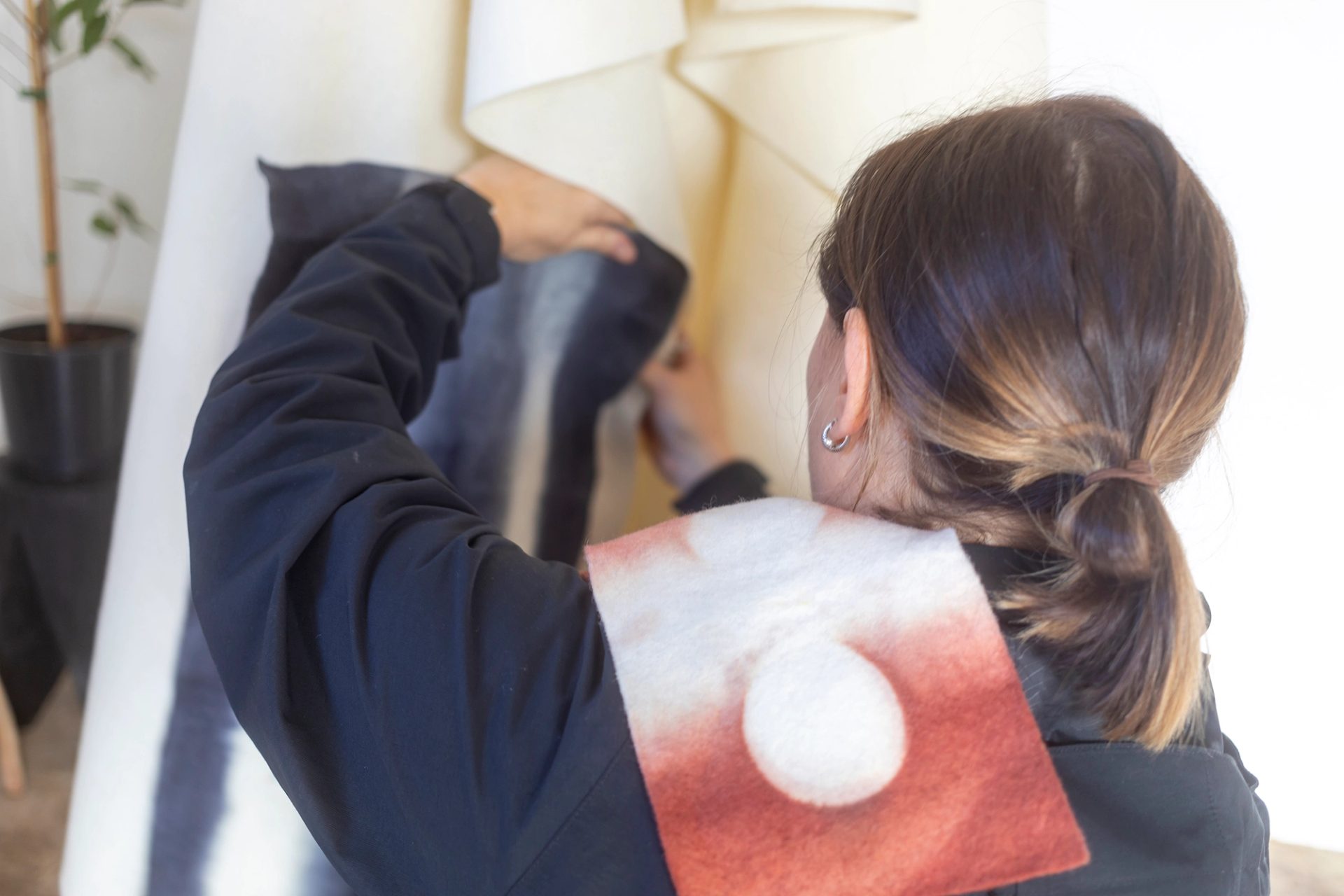

Looking at black, quinine bush is one of our medicine plants, and I know that quinine also makes black, and for me it's a story that needs healing or that needs to be part of healing or has that element to it. So, incorporating medicine as well, because even thinking on these things is a sort of … you take it on. When we stand over the dye bath, and we smell it, because we've got that familiar eucalypt smell and it’s cold season, that's already helping us to feel comfort. So, what are these other sensory things that we can embed into this yarn in different ways? The map, the journey, that talk about healing, that represent Country. There are really clever chemical ways we can do different things with the same plants. So I’m exploring some of that too, with Leah's wonderful help and advice and knowledge, and again, the symbol of it being the same story told in different ways, in different places, at different times.
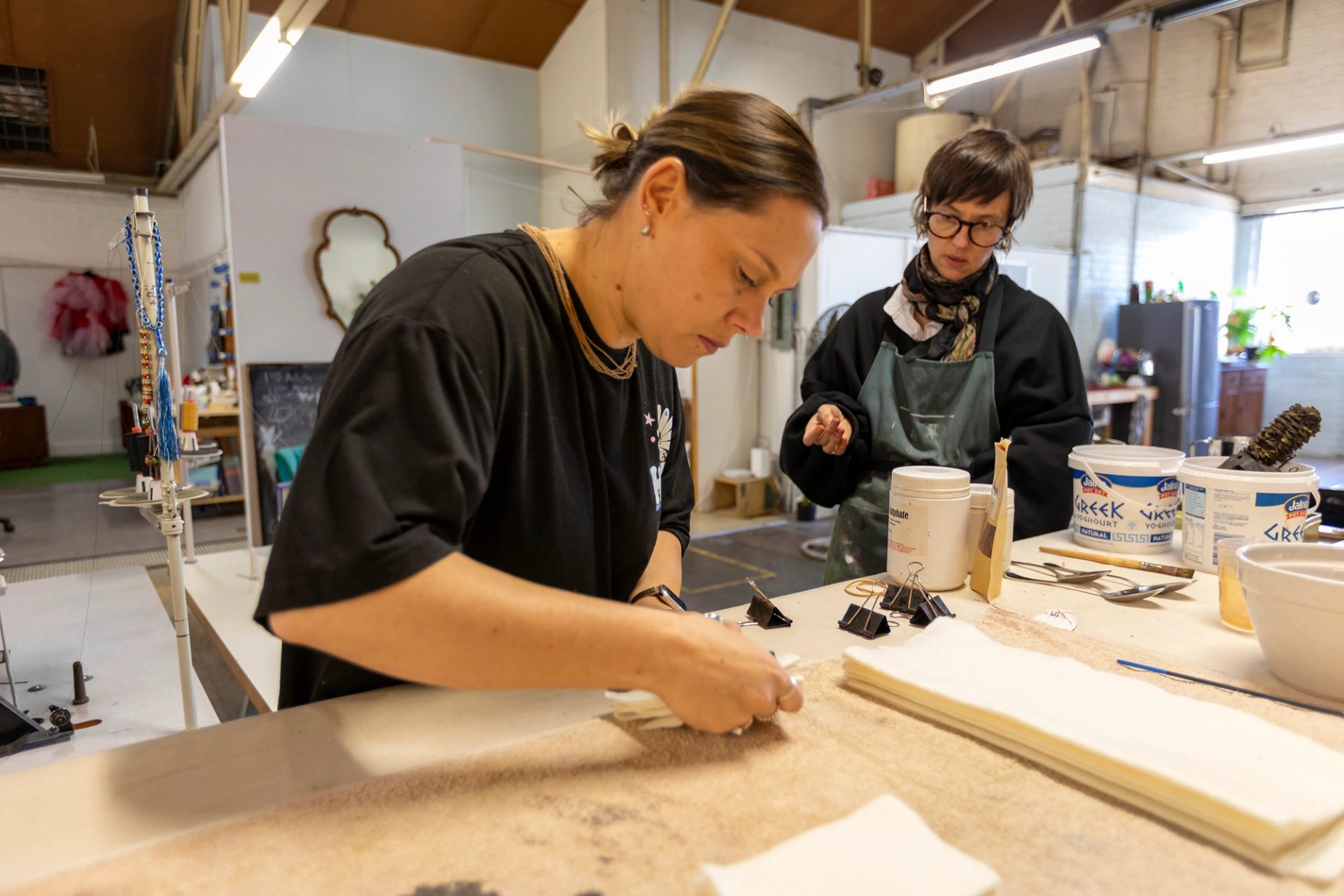
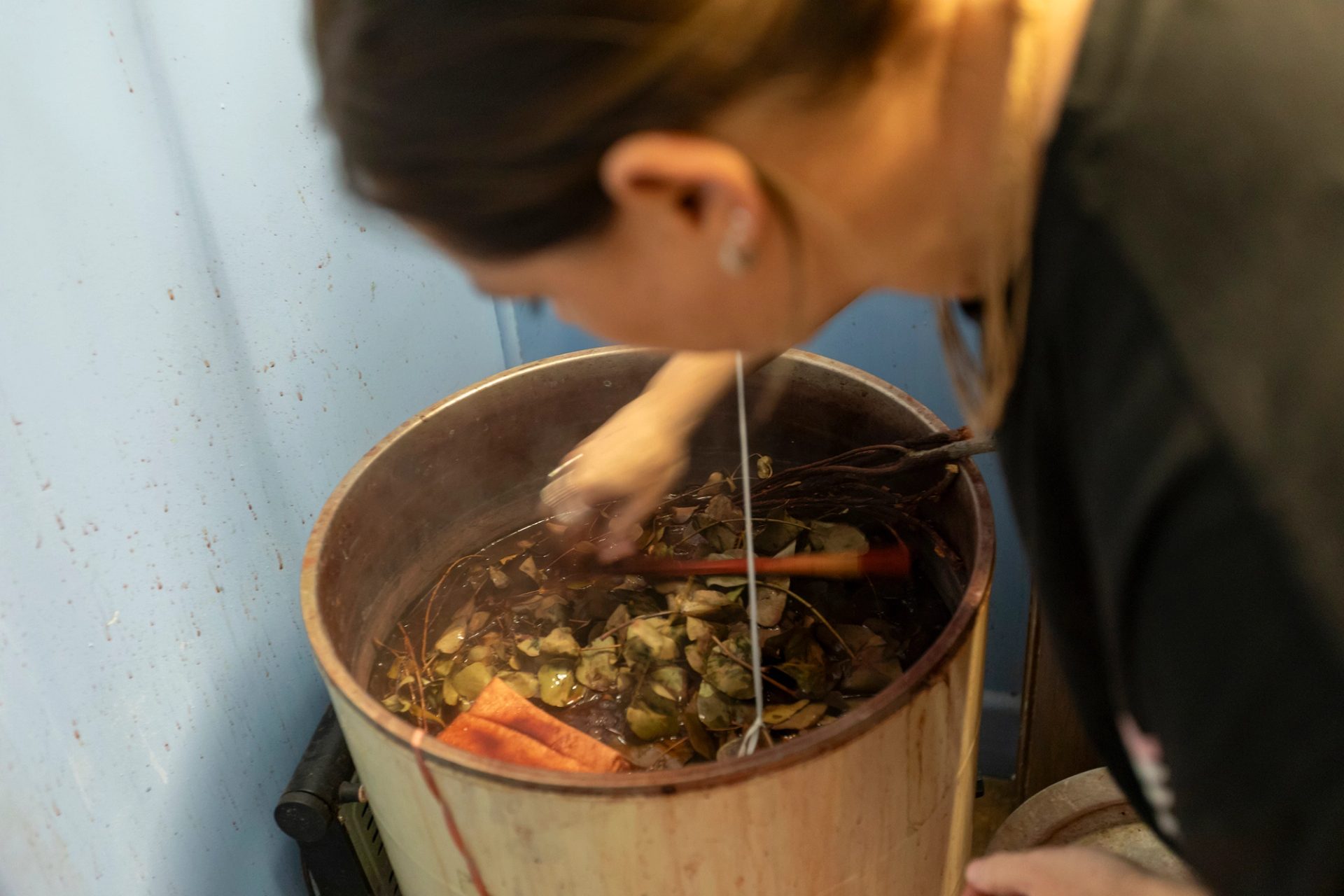

Wool is a really great material to work with. It responds well to dye. There are all these practical parts of that conversation as to why we came to select it. But there are also other layers to that yarn as well. The weight of it, I mean, grief and mourning, it's heavy. Parallel to this yarn, I'm experiencing my own grief at the moment with the passing of my dad nearly a year ago. And I think for me, it helps me to make these works to remember him, as well, because he was always the one that I'd go to, to find the yarn. And I'd say, ‘Dad, tell me about this.’ And he'd know straight away. And I can't go to him anymore. So how do I stay tethered to those yarns so that I can tell my little fullas? Keeping my hands busy and learning and creating is kind of in his honour as well. And it's helping me to think about continuity rather than things that come to an end. Instead of thinking about the things that we don't have, celebrating all that we do.
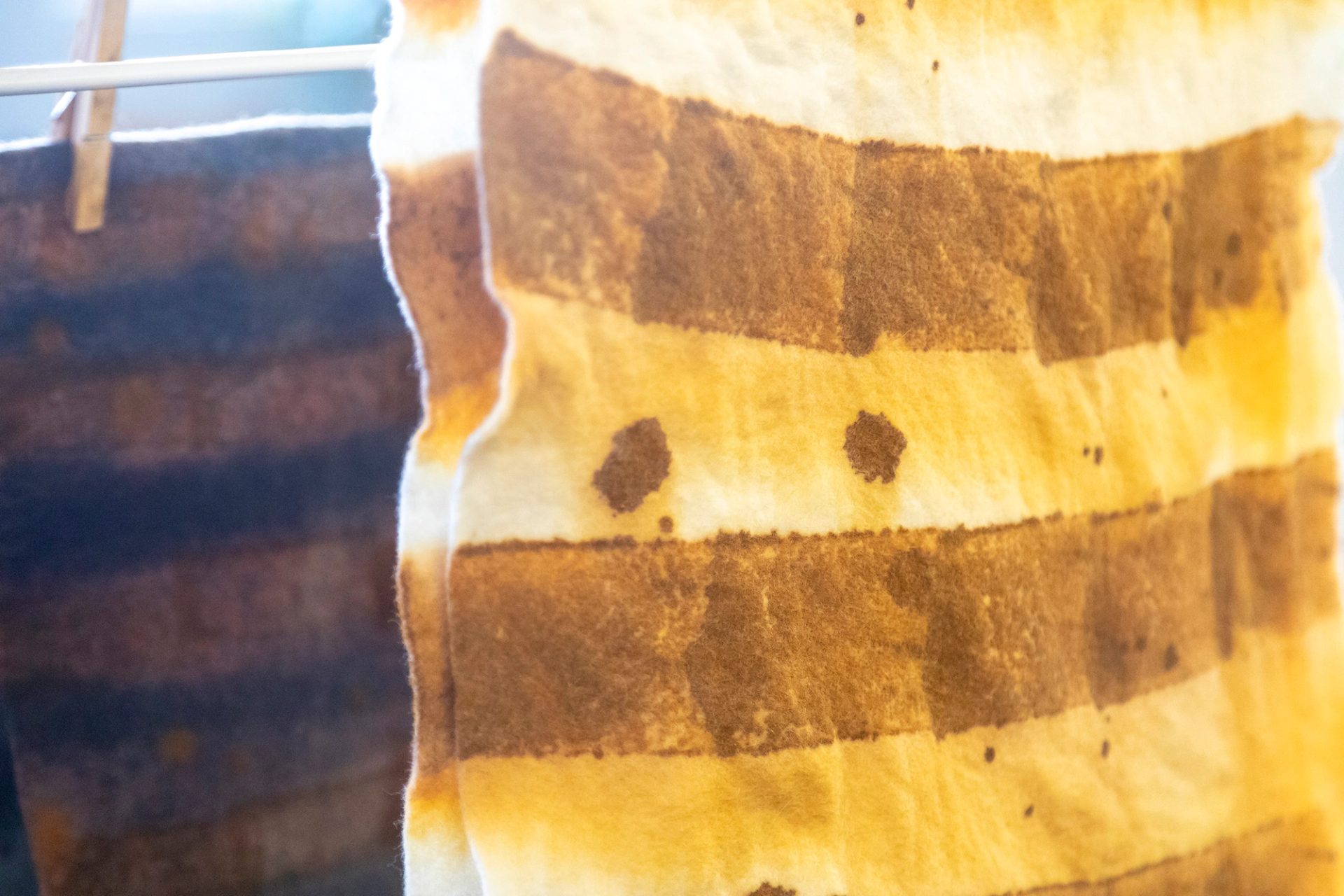
If you've ever put one of our possum cloaks around your shoulders – they're mad on weighted blankets these days, same thing! They're an extension of us. So, being mindful and gently referencing those things, I can't wait to try this on when it's come out of the dye bath and it's dry. That's going to feel powerful because all those stories and all those yarns are being absorbed.
Artist
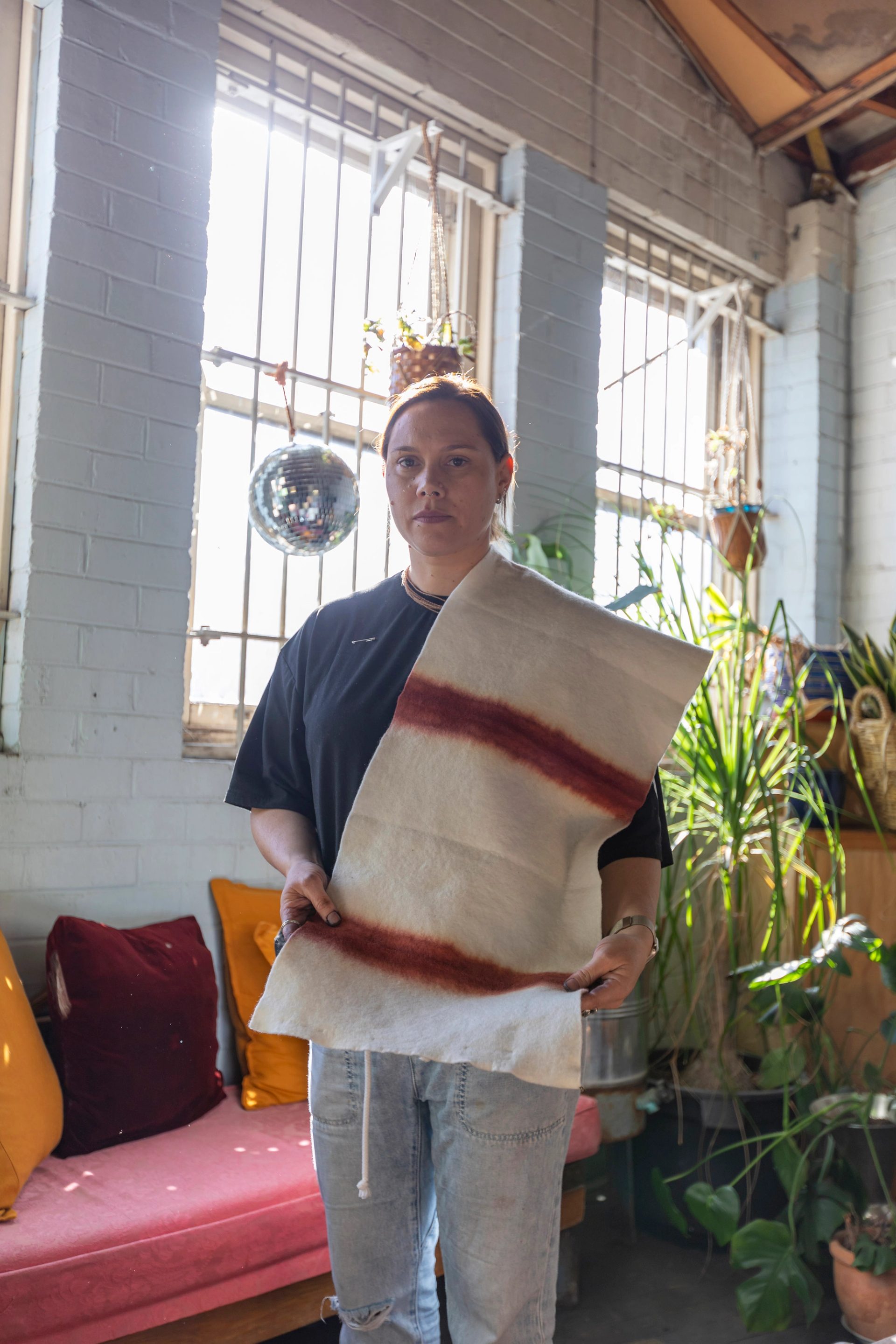
Lucy Simpson is a Yuwaalaraay woman from north-west NSW working in Gadigal/Wangal Country (Sydney). Her work, Gaay-bidi traverses waterways and maps the migration of the Bogong moth along the Murray-Darling river system. A body of work encompassing a big story of governance, ceremony and relationships, remembered and retold through earth and plant pigment, pattern and natural fibres (merino wool) across a series of five wearable forms.
‘A comment on kinship, identity, continuity and the important role we all play as custodians and caretakers of country / knowledge / story. This body of work (big story) speaks of the plight of the Bogong, and looks at the species as a symbol for south-eastern communities, our history, ngurrambaa, lore and continuing story.’











